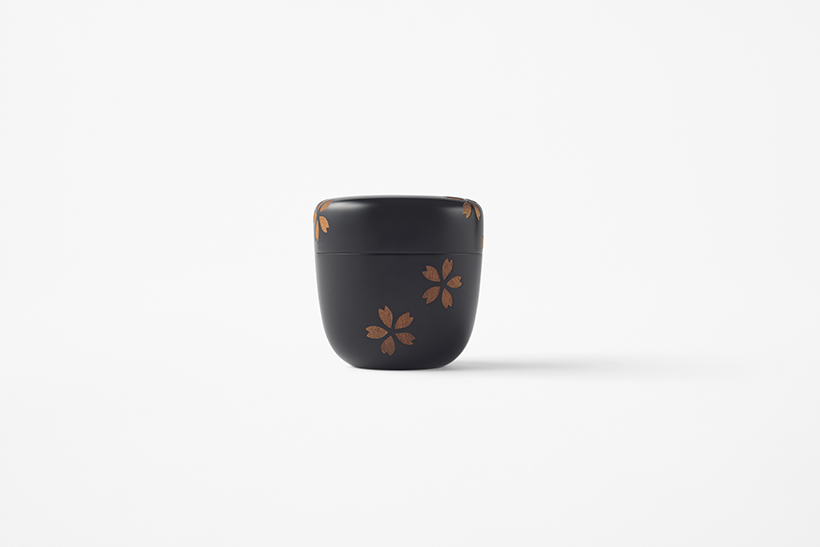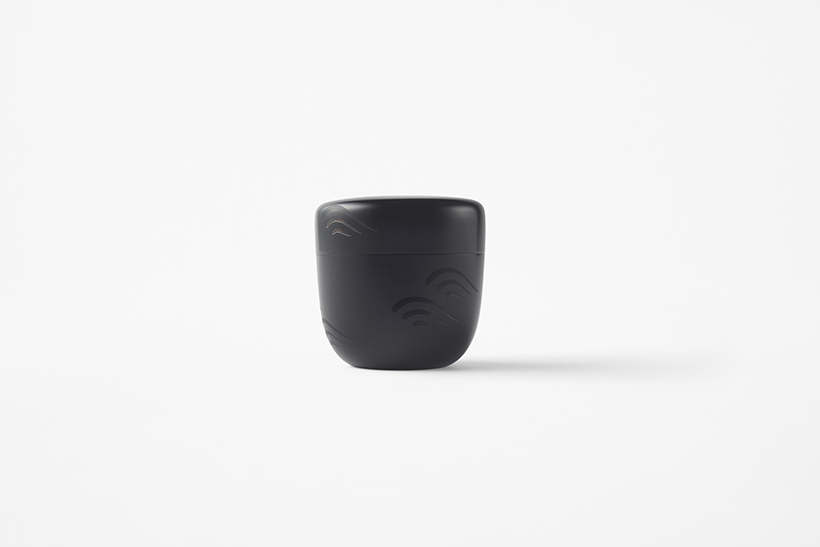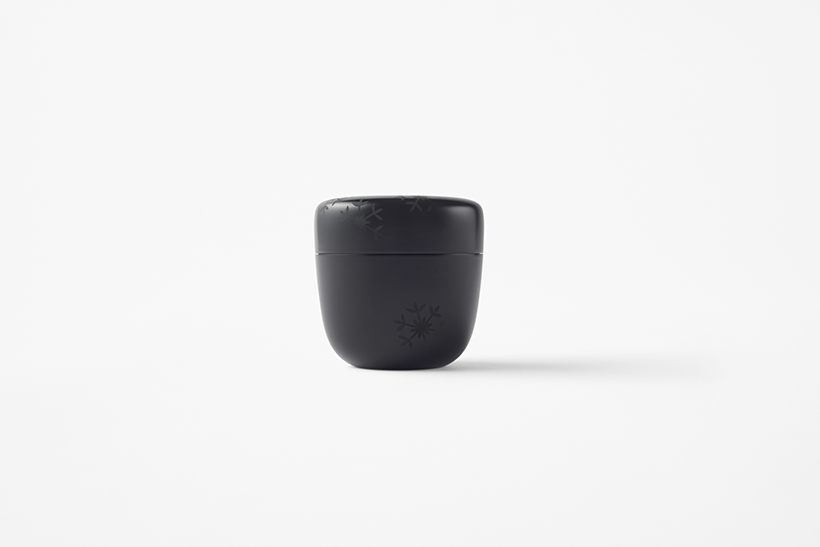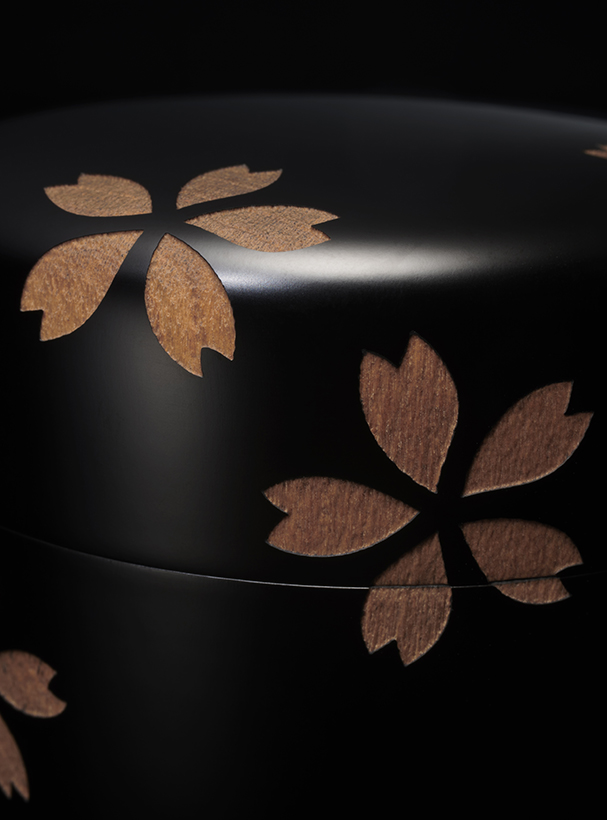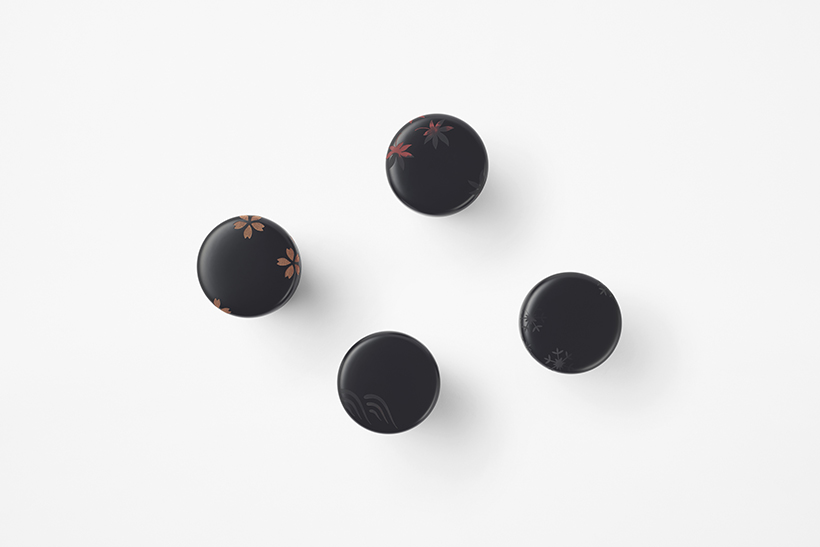sunafuki
When a tea that was considered medicinal in China was brought into Japan, airtight tea caddies were made by lacquerers to preserve the tea leaves. Later, the caddies in the shape of jujube fruit were painted black, and became known to the Japanese as Natsume. Today, natsume refers to one of the tea utensils, a container for storing matcha. In its crafting process, a mixture of lacquer and roasted soil is applied to a wooden vessel and grinded with a whetstone, which is repeated a dozen times until it obtains a smooth surface. Generally, the caddies are then overcoated and finished with maki-e or urushi-e (techniques of Japanese lacquer art). But the four natsume produced with Nakamura Sotetsu, 13th in the Nakamura line and one of the ten families of artisans serving the three schools of Japanese tea, were made through subtraction rather than addition.
To that end, a sheet laser-cut with traditional patterns was used to cover the surface of the natsume for sandblasting, an industrial technique that blasts metal particles at high pressure. Each of the four caddies bears one of four seasonal motifs: cherry blossoms, sea waves, autumn leaves, and snowflakes. With the usually hidden base material partially carved out, the natsume is designed to reveal not only the complex crafting process but also the passage of time from spring to winter; the more it is sandblasted, the deeper it traces back the time.
The spring cherry blossom motif is carved deepest, reaching all the way to the cherry wood base.
The summer sea waves are carved to the rust coating and fade to the shallower middle coating.
The autumn leaves are carved to the middle coating of the vermillion layer and the topmost layer of the black lacquer.
The winter snowflakes are only lightly carved into the top coat of the black lacquer for a matte finish.
The caddies are named“sunafuki (sandblast)”from the sandblasting technique used for the artistic expression.




